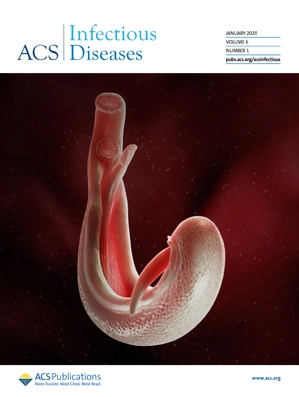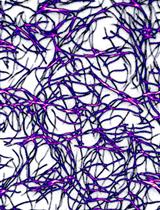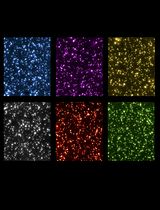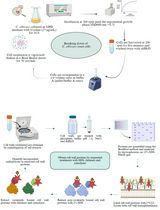- EN - English
- CN - 中文
Optimized Expression and Isolation of Recombinant Active Secreted Proteases Using Pichia pastoris
毕赤酵母优化表达和分离重组活性分泌蛋白酶
(*contributed equally to this work) 发布: 2023年03月05日第13卷第5期 DOI: 10.21769/BioProtoc.4628 浏览次数: 3544
评审: Neha NandwaniRitu GuptaAnonymous reviewer(s)
Abstract
Recombinant proteins of high quality are crucial starting materials for all downstream applications, but the inherent complexities of proteins and their expression and purification create significant challenges. The Pichia pastoris yeast is a highly useful eukaryotic protein expression system. Pichia’s low cost, genetic tractability, rapid gene expression, and scalability make it an ideal expression system for foreign proteins. Here, we developed a protocol that has optimized the expression and isolation of a non-mammalian secreted metalloprotease, where we can routinely generate recombinant proteins that are pure and proteolytically active. We maximized growth and protein production by altering the feeding regime, through implementation of a non-fermentable and non-repressing carbon source during the methanol-induction phase. This approach increased biomass production and yielded milligrams of recombinant protein. Downstream applications involving active, recombinant fungal proteases, such as conjugation to nanoparticles and structure-related studies, are greatly facilitated with this improved, standardized approach.
Graphical abstract

Background
The production of active recombinant proteases at concentrations that allow for their use in downstream applications can be particularly challenging (Colige, 2020). The yeast Pichia pastoris has been successfully used as a eukaryotic expression system for foreign proteins (Macauley-Patrick et al., 2005). Unlike mammalian cells, Pichia does not require complex media or growth conditions, which makes its use cost-effective and scalable since high cell densities can be achieved in minimal media (Macauley-Patrick et al., 2005). Pichia strains are also genetically tractable, and the variety of available promoters and selectable markers facilitate gene expression (Daly and Hearn, 2005). Moreover, the presence of a eukaryotic protein synthesis pathway in Pichia allows high levels of posttranslational modification including glycosylation, proteolytic processing, and disulfide bond formation—processes that are limited in prokaryotic expression systems (Macauley-Patrick et al., 2005; Ahmad et al., 2014; Macek et al., 2019).
Generating large quantities of recombinant proteins is achievable with bioreactors; however, this is not feasible for most and, in general, recombinant proteins are produced in shaking flasks, similar to our approach (Schwettmann and Tschesche, 2001; Fernandez et al., 2013). The relatively small volumes of culture and limited cell densities that are ultimately achieved with this approach have made the isolation of recombinant proteases in large quantities difficult. Our goal was to develop a standardized protocol that would allow for the routine expression and isolation of a proteolytically active secreted metalloprotease, with high purity and in large enough quantities to facilitate downstream applications. We made use of the AOX1 methanol-induced promoter in Pichia that ensures that transcription is tightly regulated by a repression/derepression mechanism (Ahmad et al., 2014). Carbon sources such as glucose or glycerol, which are nutritional requirements for Pichia’s cell growth, cannot be used during the induction phase since both would repress transcription. The challenge arises during induction with methanol, since growth is severely inhibited preventing high levels of biomass production, which can ultimately negatively impact protein production. We found that the addition of sorbitol, a non-repressible and non-fermentable carbon source in yeast, during the methanol-induction phase, significantly improved cell viability and biomass production. The inclusion of sorbitol boosted protein production to milligram quantities. Although implementing non-repressing carbon sources such as alanine, mannitol, trehalose, and sorbitol had previously been explored, it has not been readily adopted (Inan and Meagher, 2001; Celik et al., 2009).
Here, we provide a detailed protocol for the expression and isolation of a proteolytically active metalloprotease from a neurotropic fungal pathogen, which has been applied to our work involving protein-nanoparticle conjugates as drug-delivery platforms for the central nervous system (Aaron and Gelli, 2020).
Materials and Reagents
96-well assay plate with black wall and clear, flat bottom (Corning, catalog number: 3904)
PYREX® Delong shaker Erlenmeyer flask with extra-deep baffles, 250 and 1,000 mL (Corning, catalog numbers: 4450-250, 4446-1L)
1.5 mL microcentrifuge tubes (USA Scientific, catalog number: 1615-5500)
15 mL centrifuge tubes, conical, sterile, polypropylene (VWR, catalog number 89039-664)
Serological pipettes, sterile wrapped (Corning, catalog numbers: 4487, 4488, 4489, 4490)
250 mL centrifuge tube (Corning, catalog number: 430776)
10 kDa NMWL Ultra-4 centrifugal filter unit (Amicon, catalog number: UFC803008)
Peptone (Research Products International, catalog number: P20250); store at room temperature
Yeast extract (Thermo Scientific, catalog number: J23547-A1); store at room temperature
Dextrose (VWR, BDH Chemicals, catalog number: BDH9230); store at room temperature
Sorbitol (Sigma-Aldrich, CAS 50-70-4); store at room temperature
Methanol (Sigma-Aldrich, CAS 67-56-1); store at room temperature
Bacto agar (VWR, Life Sciences, catalog number: J637); store at room temperature
G418 sulfate (Fisher Bioreagents, CAS 108321-42-2); store at 4 °C
PureCube INDIGO Ni-MagBeads (magnetic beads) (Cube Biotech, catalog number: 75225)
Magnet, >835 KA/m (Magneto Inc., Amazon)
Pierce fluorescent protease activity kit (Thermo Fisher Scientific, catalog number: 23266)
FTC-Casein (5 mg/mL in ultrapure water)
TPCK-trypsin (50 mg/mL in tris-buffered saline)
Tris-buffered saline (25 mM Tris, 150 mM NaCl, pH 7.2)
Yeast media (see Recipes)
BMGY
BMMY
YPD
YPD + G418 (4 mg/mL) agar plate
Buffers (see Recipes)
Binding buffer pH 8.0
Wash buffer pH 8.0
Elution buffer pH 8.0
Phosphate-buffered saline, pH 7.4
Solutions (see Recipes)
10% glycerol
5% methanol
1 M potassium phosphate buffer, pH 6.0
10× YNB
500× biotin
Strains
Pichia pastoris GS115 (Invitrogen, catalog number: C18100)
Pichia pastoris GS116 <Cn MPR1> (Aaron and Gelli, 2020)
Equipment
-80 °C freezer
-20 °C freezer
4 °C refrigerator
pH meter
Vortex (Scientific Industries, SKU: SI-0236 or equivalent)
Swing-bucket centrifuge (Beckman Coulter, model: Allegra X-15R; 208 V, 60 Hz)
Innova 4200 incubator shaker (New Brunswick) or equivalent temperature-controlled shaker
Pipetman (Eppendorf, P20, P200, P1000)
Power supply (Bio-Rad, model: PowerPac Universal Power Supply)
Protein gel electrophoresis equipment (Bio-Rad, model: Mini-PROTEAN)
Microplate reader (Molecular Devices, model: SpectraMax M5e)
Procedure
文章信息
版权信息
© 2023 The Author(s); This is an open access article under the CC BY-NC license (https://creativecommons.org/licenses/by-nc/4.0/).
如何引用
Turner, A., Lanser, D. and Gelli, A. (2023). Optimized Expression and Isolation of Recombinant Active Secreted Proteases Using Pichia pastoris. Bio-protocol 13(5): e4628. DOI: 10.21769/BioProtoc.4628.
分类
微生物学 > 异源表达系统 > 非模式物种
生物化学 > 蛋白质 > 分离和纯化
您对这篇实验方法有问题吗?
在此处发布您的问题,我们将邀请本文作者来回答。同时,我们会将您的问题发布到Bio-protocol Exchange,以便寻求社区成员的帮助。
提问指南
+ 问题描述
写下详细的问题描述,包括所有有助于他人回答您问题的信息(例如实验过程、条件和相关图像等)。
Share
Bluesky
X
Copy link












